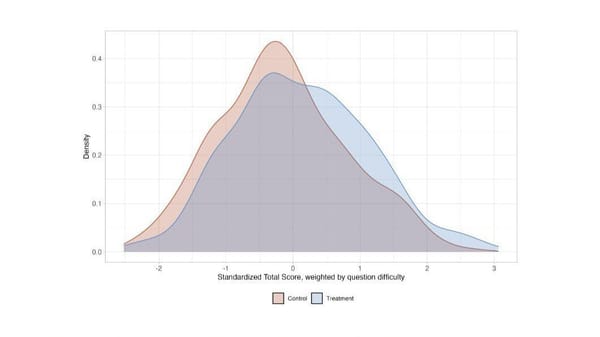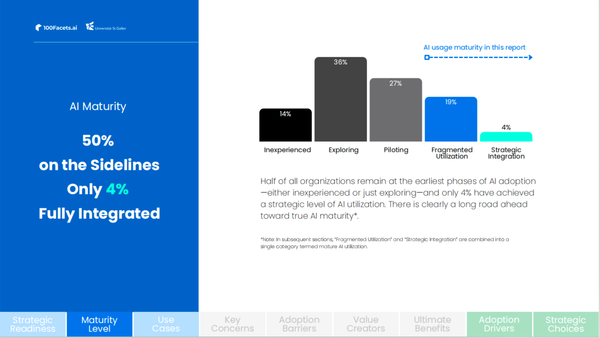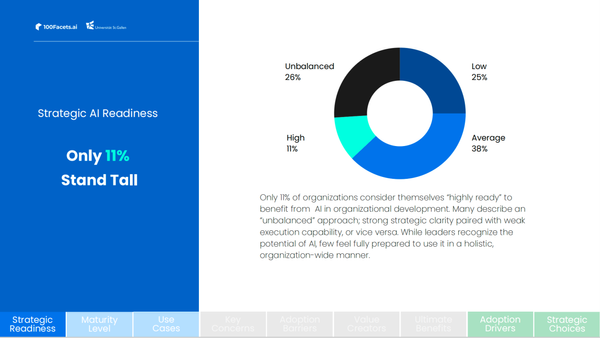Beyond Cost Savings: AI’s Real Impact on Organizational Development

Across all segments—size, readiness level, and leadership role—respondents in the joint study between 100facets.ai and University of St. Gallen (HSG) – Executive School pinpointed two prime benefits of AI in HR and L&D: “faster, deeper discovery of strengths and weaknesses” and “reduced administrative workload.” While cost-cutting often takes the spotlight in AI debates, the data suggests a broader, more transformative value proposition.
A Shift from Guesswork to Data-Led Decisions
One core advantage of using AI powered solutions, highlighted by 78% popularity among HR and OD executives, is the ability to rapidly identify strengths, weaknesses and blind spots on individual, team of organizational level—all with greater accuracy and less bias than purely manual evaluations. In our panel discussion of the results, one of the leaders described how AI-driven diagnostics let OD teams pivot quickly:
“We used to wait six months for a survey cycle; now insights come in real-time”.
These swift insights enable timely interventions, be it targeted upskilling or reorganizing a team to handle emerging priorities.
Freeing HR/L&D from Routine Tasks
Automation remains a strong selling point—74% of participants cited reduced admin burdens as a key AI benefit. Instead of spending hours collating feedback or scheduling training, HR professionals can redirect efforts toward strategy, coaching, or culture-building. One transcript reference explicitly frames this as a “shift in roles,” where HR moves from “transactional caretaker” to “strategic facilitator” as AI handles repetitive chores.
Caution: Insights Are Only as Good as Follow-Through
Gathering data is one thing; acting on it effectively is another. Experts note that “faster, deeper” insights can overwhelm organizations lacking the structures to absorb them. Without a robust change-management framework, even brilliant analytics won’t spark improved performance or leadership behaviors. In short, AI can show you where to go—but people must decide how to get there. This is where modern AI follow up tools can become handy (see a deeper discussion on this topic here)
So what?
If you’re only thinking of AI in terms of cutting costs, you’re missing the bigger story. Accelerated, data-rich insights and a dramatic reduction in administrative overhead open the door to more strategic HR and L&D. Leaders can do more than simply react; they can proactively shape workforce capabilities in near-real time. As AI takes routine tasks off your plate, the question becomes: How will you capitalize on the freed capacity to drive real organizational transformation?
As we discussed in the panel, the key question is not if AI is going to be used or not. But how HR is going to reinvent itself?
The old playbooks won't be enough if HR wants to play its strategic role in helping the organizations navigate through one of the biggest transformations that we are going through after the Industrial Revolution.




